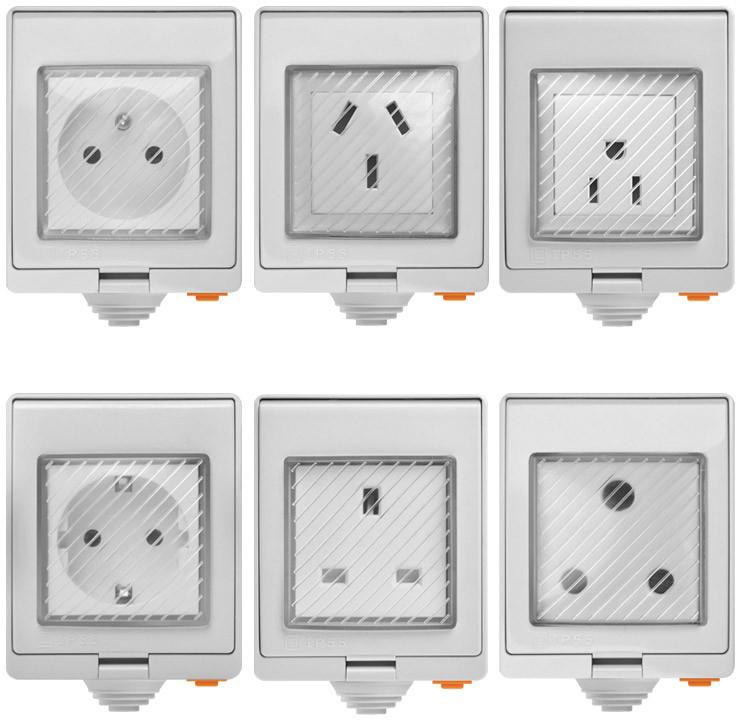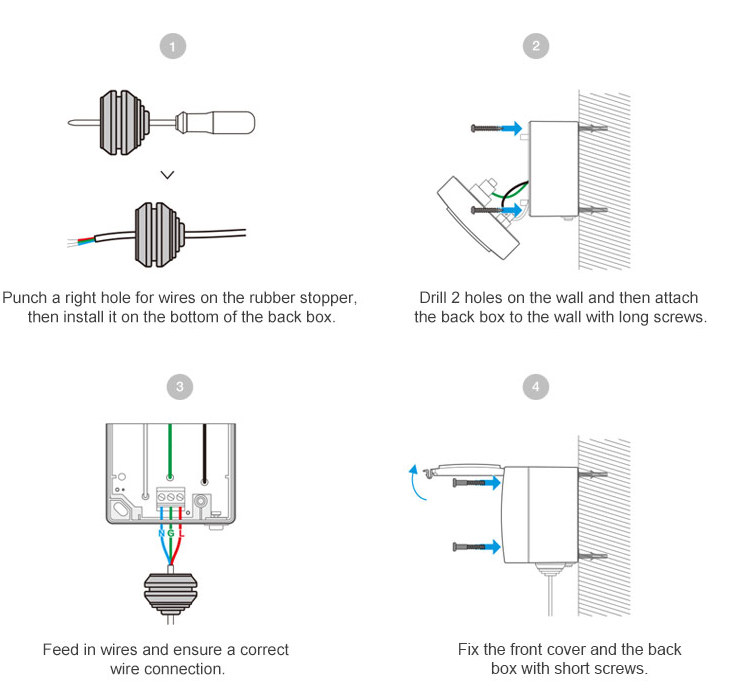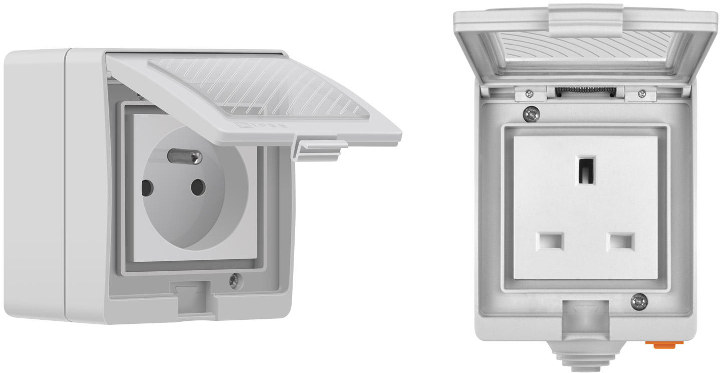When WiFi smart sockets (aka smart plugs) started to appear a few years ago, they were often only available with either US or China plugs, and users from Europe, UK or other locales may have had to use an adapter instead. Since then, products that ship with multiple versions such as Sonoff S26 or Orvibo Wiwo S20 have launched in order to cater to more people around the world.
ITEAD has now launched another WiFi smart socket, namely Sonoff S55, that’s designed to work outdoors thanks to IP55 ingress protection rating, and is offered in six different variants for Australia, Germany, France, the United States, South Africa, and the United Kingdom. Sonoff S55 specifications:
Sonoff S55 specifications:
- Input/Output
- S55TPI(AU) – AC 100-240V 50/60Hz 10A Max
- S55TPF(DE) – AC 100-240V 50/60Hz 16A Max
- S55TPE(FR) – AC 100-240V 50/60Hz 16A Max
- S55TPB(US) – AC 125V 50/60Hz 10A Max
- S55TPD(ZA)- AC 100-240V 50/60Hz 10A Max
- S55TPG(UK) – AC 100-240V 50/60Hz 13A Max
- Connectivity – IEEE 802.11b/g/n 2.4GHz
- Dimensions – 85 x 70 x 70mm (Material: PC V0)
- Certifications – FCC & CE
- IP Rating – IP55 (weatherproof / splashproof)
Sonoff S55 can be controlled using eWelink app on smartphones running Android 4.1 or iOS 9.0 or greater, or voice commands via Amazon Alexa or Google Assistant/Nest. The app allows you to remotely turn on/off devices, schedule devices on/off at a preset time(s), share devices with your friends to control them together, sync the real-time device status changes to your phone, and integrates with IFTTT service.
If you’d rather control it with a web browser, MQTT or Domoticz, you may eventually be able to install Sonoff-Tasmota open-source firmware. It’s not supported yet since it’s just been announced.
Interested? You can get one of those for $14.99 on Banggood with free shipping, at least during the pre-order period with shipping scheduled for the end of September. ITEAD also sells the smart sockets on their own website, where you’ll find the user manual, quick installation guide, and FCC & CE certification documents.


Jean-Luc started CNX Software in 2010 as a part-time endeavor, before quitting his job as a software engineering manager, and starting to write daily news, and reviews full time later in 2011.
Support CNX Software! Donate via cryptocurrencies, become a Patron on Patreon, or purchase goods on Amazon or Aliexpress




